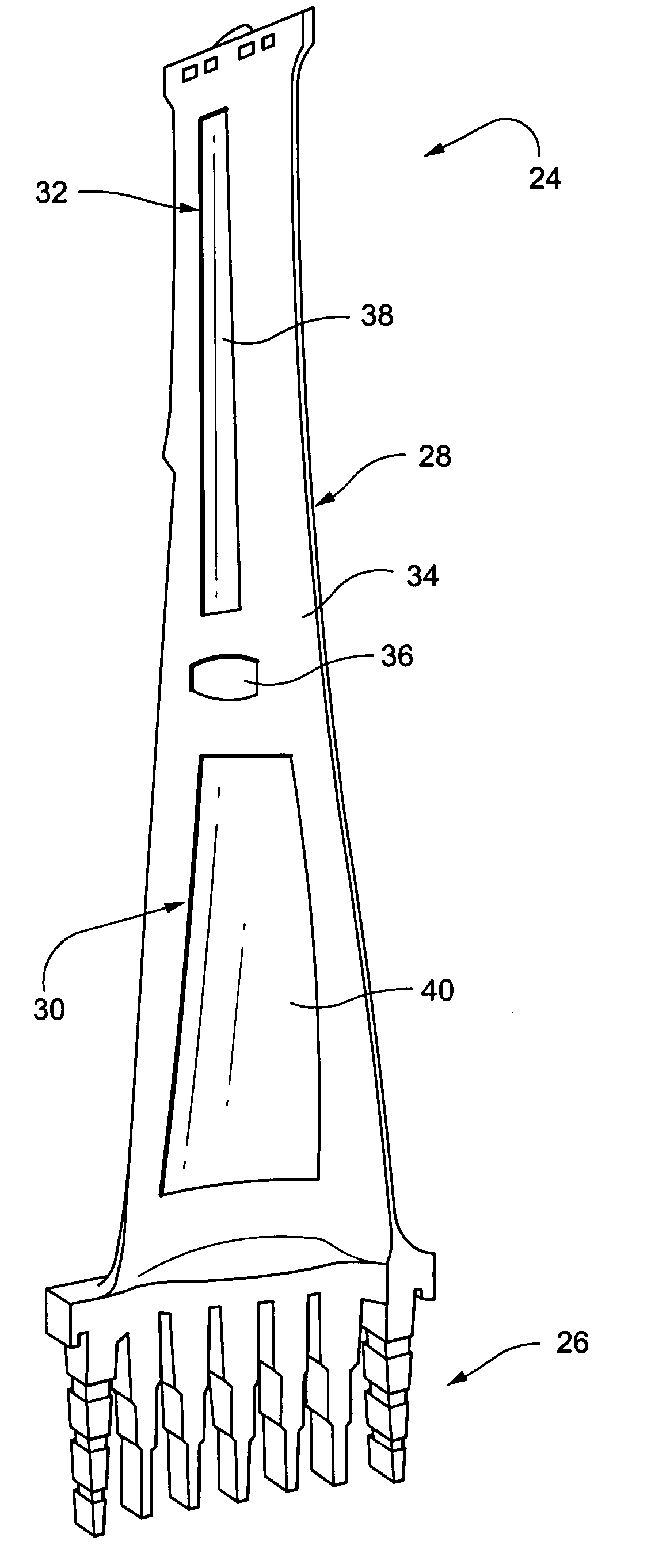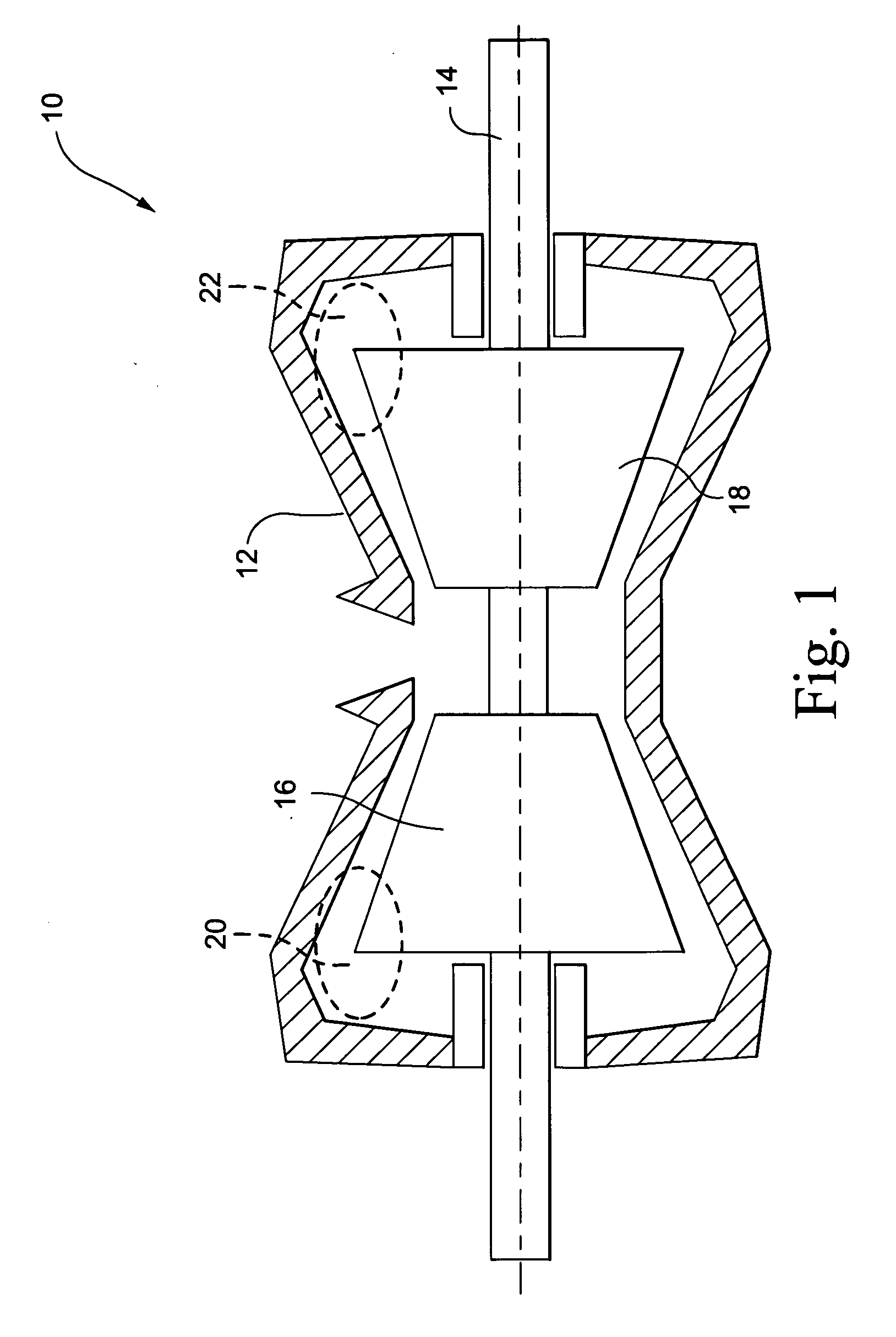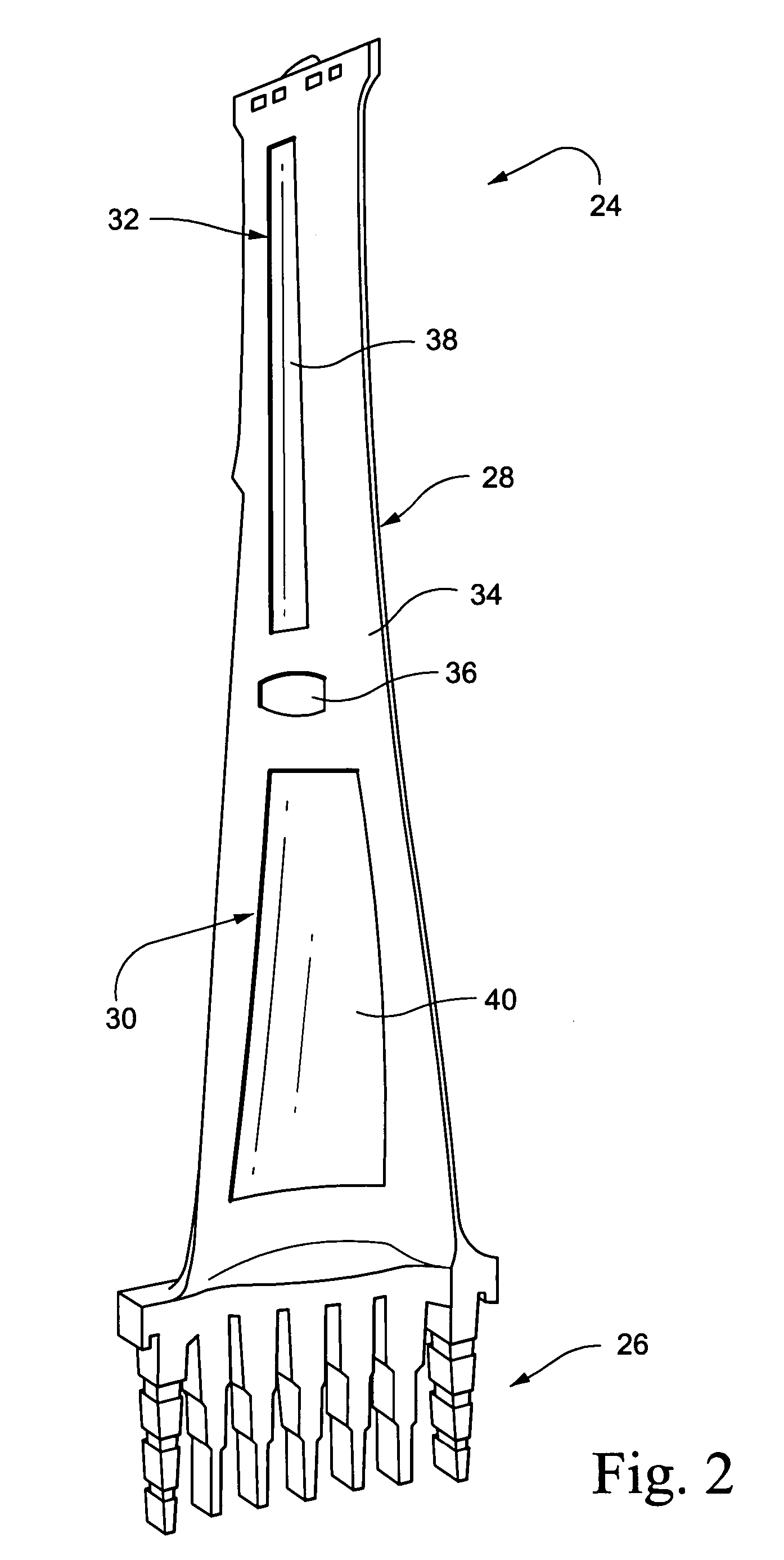Hybrid turbine blade and related method
a hybrid turbine and blade technology, applied in the field of composite blades, can solve the problems of reducing reliability, blades contributing to higher disk stresses, and low performance, and achieve the effects of reducing the volume of filler, enhancing the cost benefit of this arrangement, and high temperature capability
- Summary
- Abstract
- Description
- Claims
- Application Information
AI Technical Summary
Benefits of technology
Problems solved by technology
Method used
Image
Examples
Embodiment Construction
[0013]FIG. 1 shows a schematic diagram of a double-flow, low pressure turbine 10 including a turbine casing 12, rotor 14 and a plurality of wheels in two turbine sections indicated at 16, 18. The areas 20, 22 circled in dotted lines represent the radially outermost regions of the last stage blades that have been shown to experience the most windage heating during partial load conditions. Thus, in accordance with an exemplary embodiment of the invention, higher temperature filler material (at least 400° F. capability) is used in radially outer pockets of the blades. FIG. 2, for example, shows a blade 24 including a shank portion 26 and an airfoil portion 28. Radially inner and outer pockets 30, 32 are formed on the pressure side of the airfoil portion 28, separated by a relatively wide web or rib 34 and a mid-span damper 36. In the example given, a high temperature filler material 38 is used to fill pocket 32 and a lower temperature filler material 40 would be used to fill pocket 30....
PUM
| Property | Measurement | Unit |
|---|---|---|
| temperature capability | aaaaa | aaaaa |
| temperature | aaaaa | aaaaa |
| temperature | aaaaa | aaaaa |
Abstract
Description
Claims
Application Information
 Login to View More
Login to View More - R&D
- Intellectual Property
- Life Sciences
- Materials
- Tech Scout
- Unparalleled Data Quality
- Higher Quality Content
- 60% Fewer Hallucinations
Browse by: Latest US Patents, China's latest patents, Technical Efficacy Thesaurus, Application Domain, Technology Topic, Popular Technical Reports.
© 2025 PatSnap. All rights reserved.Legal|Privacy policy|Modern Slavery Act Transparency Statement|Sitemap|About US| Contact US: help@patsnap.com



